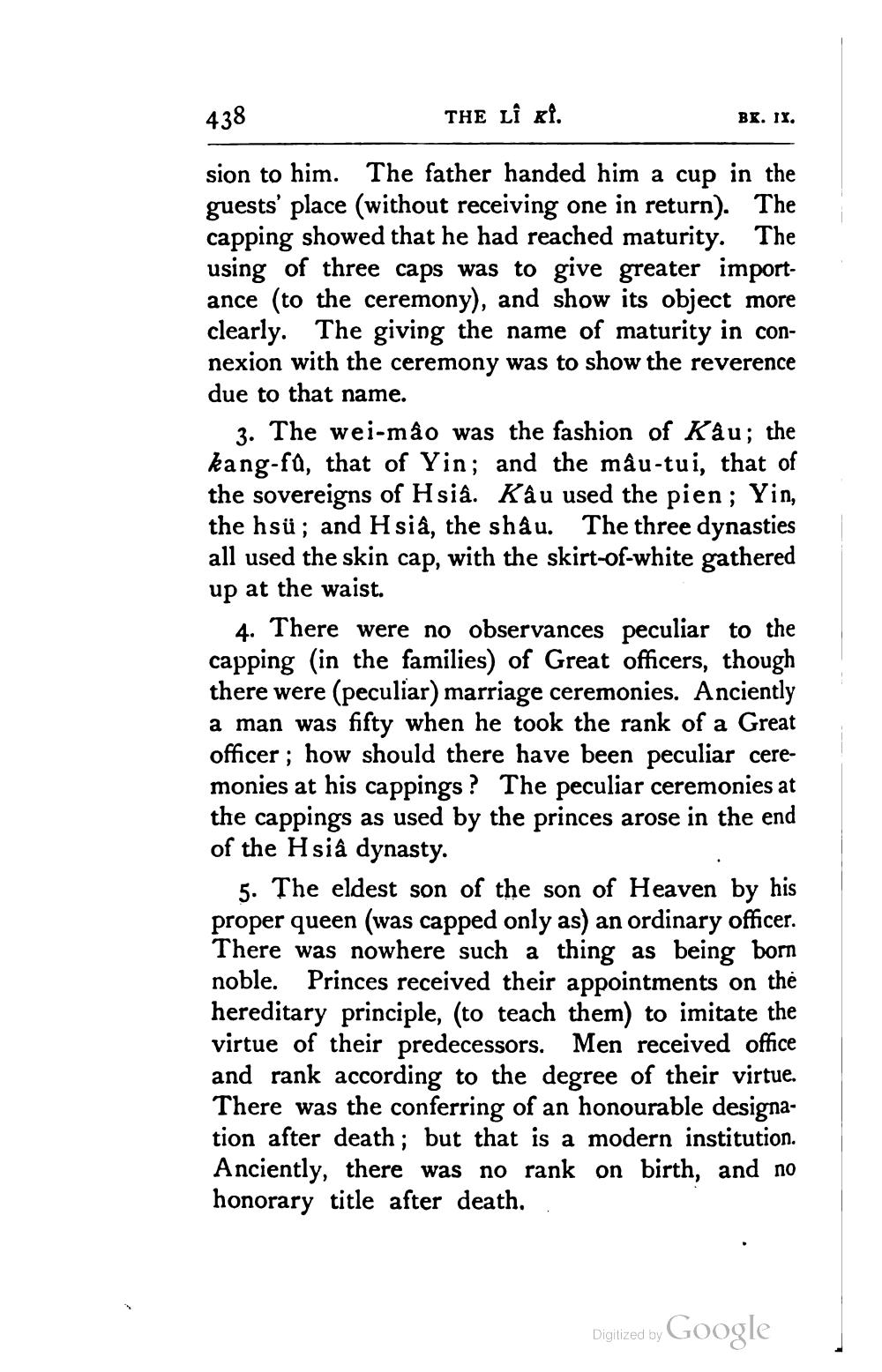________________
438
THE LÎ xi.
BK. IX,
sion to him. The father handed him a cup in the guests' place (without receiving one in return). The capping showed that he had reached maturity. The using of three caps was to give greater importance (to the ceremony), and show its object more clearly. The giving the name of maturity in connexion with the ceremony was to show the reverence due to that name.
3. The wei-mão was the fashion of Kau; the kang-fd, that of Yin; and the mâu-tui, that of the sovereigns of Hsia. Kâu used the pien; Yin, the hsü; and Hsia, the shâu. The three dynasties all used the skin cap, with the skirt-of-white gathered up at the waist.
4. There were no observances peculiar to the capping (in the families) of Great officers, though there were (peculiar) marriage ceremonies. Anciently a man was fifty when he took the rank of a Great officer ; how should there have been peculiar ceremonies at his cappings? The peculiar ceremonies at the cappings as used by the princes arose in the end of the Hsiâ dynasty.
5. The eldest son of the son of Heaven by his proper queen (was capped only as) an ordinary officer. There was nowhere such a thing as being born noble. Princes received their appointments on thė hereditary principle, (to teach them) to imitate the virtue of their predecessors. Men received office and rank according to the degree of their virtue. There was the conferring of an honourable designation after death; but that is a modern institution. Anciently, there was no rank on birth, and no honorary title after death.
Digitized by G
Digitized by Google




